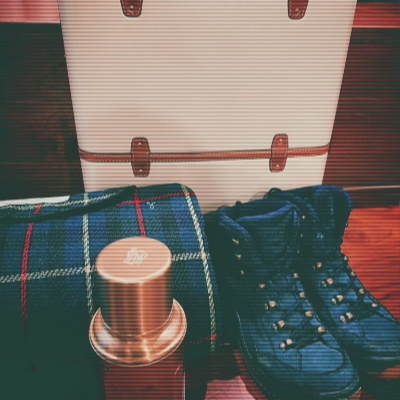{English#01}'Wafuku',' Kimono' and 'Gofuku'
閱讀時間約 10 分鐘
Hi, everybody! I am Clearwater (清水)!For most of the foreigners, Kimono is one of the cultural symbol of Japan. Even though you haven’t visited Japan before, you might come across some lovely kimono girls when you search ‘Japan’ in your Instagram search.
I know that some might find it weird when they first look at the title, just because they might never come across the other two terms ‘Wafuku’ and ‘Gofuku’. We used to call this traditional Japanese clothing as kimono. In Japan, this traditional clothing can also be called as ‘Wafuku’ or‘Gofuku’.
Even though these three terms can all be used to refer to the same idea , there are still differences between their meanings. Don’t worry, I am here to explain all these to you!
What is Wafuku(和服)?
In Japanese, Wafuku refers to all the Japanese traditional clothing. ‘Wa’(和) stands for Japan and ‘fuku’(服) stands for clothing. Before the Meiji period(1868–1912), the Japanese used to call all their clothing as ‘kimono’ (着物). However, after western culture entered Japan, the Japanese started to wear western clothing. In order to distinguish between western clothing and Japanese traditional clothing, the term ‘Wafuku’ was created.
What is Kimono(着物)?
Before the Meiji period(1868–1912), the Japanese used to call all their clothing as ‘kimono’ (着物). At that time, ‘kimono’ means ‘ garments which people wear’.This word also represented ‘all the garments that Japanese wear’ at that time. However, after western culture entered Japan, the word ‘Wafuku’ (和服) was created to represent all the Japanese traditional clothing. Due to this reason, some people treat ‘kimono’ and ‘Wafuku’ as synonyms that represent the same idea. Although most of the Japanese treat them as synonyms, some point out that ‘kimono’ normally refers to ‘nagagi’(長着).
What is ‘nagagi’?
Nagagi is a type of Japanese traditional clothing in which it is long till the ankle. It is derived from ‘kosode’, another Japanese traditional garment which used to be worn by people in Edo period (1603–1867).
What is Gofuku (吳服)?
There is another word ‘ gofuku’ which also represents Japanese traditional clothing due to its history. It was said that the fabric-making techniques of those garments were introduced to Japan from China‘s ancient kingdom ‘Go’. During the Edo period, garments made of silk were called ‘gofuku’ and were sold at ‘gofuku yan’. Garments made from cotton, hemp were called ‘futomono’ and were sold at ‘futomono yan’.
There are no more ‘futomonoyan ‘ in Japan nowadays, but ‘gofukuyan’ still exists and they now sell different Japanese traditional clothing of different fabrics , not only limited to silk, cotton or hemp. Because of this reason, Japanese traditional clothing can also be called ‘gofuku’.
Similar, but still different
It seems that all three terms can refer to the same meaning, but as what I have mentioned before, some Japanese thought that ‘kimono’ is different from ‘ Wafuku’.
Their argument is that ‘Wafuku’ refers to all the Japanese traditional clothing, while ‘kimono’ is usually used to refer to ‘nagagi’, a category of Japanese traditional clothing. Wafuku is not only limited to nagagi, but also includes other categories, like hakama or haori.
Two points of view
These arguments have lead to two kinds of points of view.
- No matter ‘ Wafuku’, ‘Kimono’ or ‘Gofuku’, they all refer to all the Japanese traditional clothing. This is also an idea that most of the Japanese come as a consensus.
- ‘ Wafuku’ and ‘Gofuku’ mean the same concept, but ‘kimono’ used to refer to nagagi, especially for those who wear them.
Then, which is correct? Two of them are also correct. But they might be different based on different Japanese. For the first point of view, the answer is correct based on Japanese history. For the second point of view, the use of the word’ kimono’ is used to distinguish it from other categories. But still, some will also use the word to stand for all the Japanese traditional clothing.
留言0
查看全部
清水一人着物普及社的沙龍 的其他內容
你可能也想看
【譯】【書】Children Learning English兒童英語習得Since I would like to practice my translation ability, I decided to translate the book “Children Learning English” by Jayne Moon (ISBN 978-1-4050-8002


2023-12-09
The studying English form KevinDear Terence,
Thank you for the email.
I already add your account into my Line list. Finally, it did work.
I want to share some of my experience

2023-07-23
EF English Live 學習心得EF English Live是我使用過CP值最高,幫助最大的學習平台,過去我曾用過付費平台如"Tutor ABC"、"希平方",也用過許多免費平台如"Voice tube"。但用過EF後,還是覺EF對我幫助最大,因此推薦二位同事,他們試用後也加入EF,我也因此獲得EF提供二個月免費學習。
最吸引

2023-07-23
Learning List of English Songs2018.01
1.x Perfect: Karaoke, chinese lyrics, lyrics, adapted, symphony, Ed Sheeran MV
2.x All of me: Karaoke, chinese lyrics, lyrics, adapted, John

2023-07-23
日月神示-日月卷-第二十帖翻譯。The translation of Hifumi Shinji in English 第20帖
中英譯文。
好好對待因果之種。
2023-01-28





